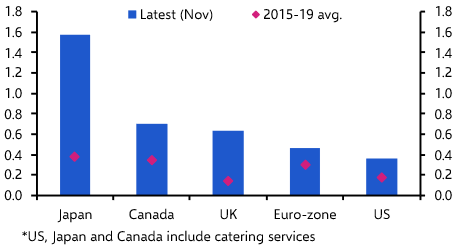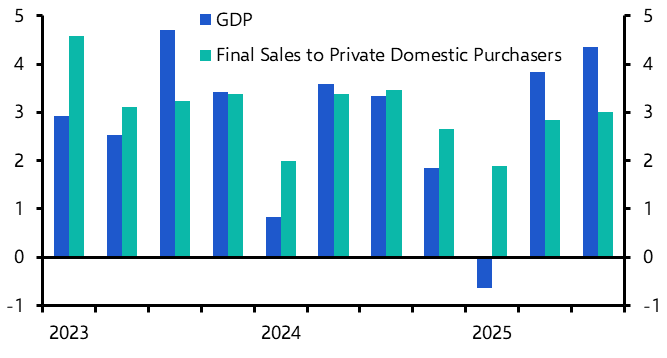Governments should help the recovery – provided it’s with the right kind of stimulus
The past fortnight has seen a growing push in some quarters for additional fiscal stimulus to bolster the recovery from lockdowns. This is particularly true in the UK, where fresh support seems likely to be announced in a fiscal statement at some point in the next few weeks. Other countries may follow suit.
This raises two questions: is additional fiscal stimulus necessary and, if so, what form should it take?
As I noted last week, a lot depends on how quickly workers that have experienced an enforced rise in savings during lockdowns start to spend these newly acquired savings as economies reopen.
Viewed this way, the most effective form of government support would be a plan that reassures citizens it will be possible to reopen economies without risking new outbreaks of the virus, and that if new outbreaks do emerge they can be contained without having to reimpose national lockdowns. This would help to encourage those that have acquired savings to spend – thus mitigating the need for additional fiscal support.
However, if fear and uncertainty linger then enforced savings will turn to precautionary savings. In this situation, demand will remain depressed and there will be a need for additional stimulus once the time-limited support programmes that were announced by governments in the early days of the pandemic start to expire.
The problem facing governments is that it’s almost impossible to observe in real time which of these scenarios is emerging. Yet this may not matter very much in practice since the balance of risks attached to each course of action are asymmetric. Provide too little support, and the recovery will be weaker and the long-term economic scarring from the virus greater than would otherwise be the case. Provide too much support, and inflation pressures may develop more quickly than would otherwise be the case. This could, among other things, cause a spike in borrowing costs.
Yet as I’ve noted before, a spike in inflation – and bond yields – are not the main concerns right now. It is therefore better to err on the side of providing more rather than less policy support – and I suspect other governments will join the UK in unveiling additional fiscal stimulus over the coming months.
This brings us to the question of what form that stimulus should take. Public investment provides the biggest bang for your fiscal buck (in the jargon, it carries a higher fiscal multiplier). But the reality is that it’s hard to identify so-called “shovel ready” projects, and even harder to get them off the ground quickly. While a convincing case can be made for increasing public investment, particularly at a time of ultra-low government bond yields, this can’t be a central pillar of any package that aims to support the recovery over the next three to six months.
In the UK, Chancellor Rishi Sunak is reportedly considering a cut in VAT. This would at least have the benefit of speed, as it could be implemented almost immediately. But it’s not obvious that a cut in VAT is particularly well suited to the peculiar nature of the current recession. After all, unlike in normal recessions, in which household finances tend to come under pressure, this recession has come alongside a rise in the household savings rate. Against this backdrop, it is not obvious that a cut in VAT of one or two percentage points would make a significant difference in persuading large swathes of otherwise cautious consumers to spend.
Instead, government support would be more effective if it were targeted on the areas of the economy that have been hit hardest. This means extending support for unemployed or furloughed workers. It also means exploring new policies such as payroll tax holidays designed to encourage firms to re-hire staff or temporary wage subsidies and government-sponsored training programmes in those sectors that have been hit hard but still have a viable future.
The debate over the need for fiscal stimulus is likely to intensify over the coming weeks. As it does, it’s worth keeping in mind that the economic impact of additional support will depend as much on the form it takes as it will on the decision to provide it at all.
In case you missed it:
- Our Senior US Economist, Andrew Hunter, argues that the Fed may soon have to step up its pace of Treasury purchases.
- Our Senior Japan Economist, Marcel Theliant, explores why huge monetary stimulus in Japan has failed to push up inflation – and sketches out lessons for other economies today.
- Finally, we’re holding a webinar later this week in which we’ll discuss the current state of play in the global economy and some of the longer-term consequences of the pandemic. All welcome, register here.



